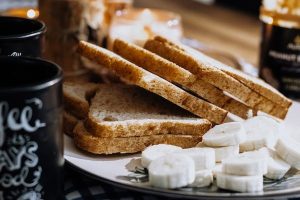There’s something truly magical about the aroma of freshly baked bread wafting through your home. It’s a simple pleasure that never loses its charm. If you’ve ever been enticed by the idea of making your own homemade bread but felt intimidated by the process, fear not. In this blog post, we’ll take you through the basics of bread baking, demystifying the art and science of creating a warm, crusty loaf from scratch.
Ingredients Matter
Every great loaf of bread starts with the right ingredients. The basic components are flour, water, salt, and yeast. The type of flour you use can dramatically affect the texture and flavor of your bread. While all-purpose flour is a good starting point, experimenting with bread flour, whole wheat flour, or even specialty flours like rye can lead to unique and delicious results.
When it comes to yeast, there are two primary options: active dry yeast and instant yeast. Active dry yeast needs to be activated in warm water before using, while instant yeast can be mixed directly with the dry ingredients. The choice between the two often depends on personal preference and the time you have available. Remember to store your yeast in a cool, dry place to keep it active.
Kneading and the Dough
Kneading is a crucial step in bread making. It’s the process of working the dough to develop gluten, which gives bread its structure and texture. Kneading also helps distribute the yeast and other ingredients evenly throughout the dough. To knead effectively, follow these steps:
- Place your dough on a lightly floured surface.
- Fold the dough in half.
- Push down and away with the heels of your hands.
- Give the dough a quarter turn and repeat the process.
- Continue for 10-15 minutes or until the dough is smooth and elastic.
If you’re not a fan of traditional kneading, you can also use a stand mixer with a dough hook attachment. This can save you time and effort while still producing excellent results.
Rising to the Occasion
After kneading, your dough needs time to rise. This is when the yeast works its magic, creating tiny bubbles that make the bread light and airy. Place the dough in a greased bowl, cover it with a clean cloth or plastic wrap, and let it rise in a warm, draft-free place until it has doubled in size. The time it takes to rise can vary depending on the recipe, but it’s usually around 1-2 hours.

Shaping and the Second Rise
Once your dough has risen, it’s time to shape it. Gently punch it down to remove any air bubbles, then shape it into the desired form. This could be a classic loaf, baguette, or even dinner rolls. Place the shaped dough on a baking sheet or in a greased loaf pan. Cover it again and let it rise for a second time. This shorter rise, known as the “proofing” stage, helps the dough relax and ensures a better texture in the final product.
Baking Perfection
Now comes the moment you’ve been waiting for: baking your bread. Preheat your oven to the specified temperature in your recipe. Before placing the dough in the oven, consider adding a few finishing touches. A light egg wash can give your bread a glossy crust, and a sprinkle of seeds or coarse salt can add flavor and texture.
As your bread bakes, the scent of fresh bread will fill your kitchen, creating an anticipation that’s hard to resist. The baking time varies depending on the size and shape of your bread, but most loaves take 30-40 minutes. To check for doneness, tap the bottom of the bread; it should sound hollow.
Cooling and Enjoying
As tempting as it may be, resist the urge to slice into your freshly baked bread right away. Let it cool on a wire rack for at least 15-20 minutes. This resting period allows the bread to finish setting and ensures that the moisture inside is evenly distributed. When you do finally cut into it, you’ll be rewarded with a delightful blend of crunchy crust and soft, tender crumb.
Experiment and Have Fun
Baking bread is both an art and a science, and there’s always room for experimentation. Try different flours, add ingredients like seeds, herbs, or dried fruits, or even create unique shapes and designs. The joy of baking bread lies not just in the delicious end result but also in the process itself. So, don your apron, roll up your sleeves, and start your bread-making adventure. With practice and a little patience, you’ll soon be savoring the joy of freshly baked, homemade bread that’s uniquely yours. Happy baking!
« The Power of Positive Thinking Physical Health Benefits of Quality Sleep »